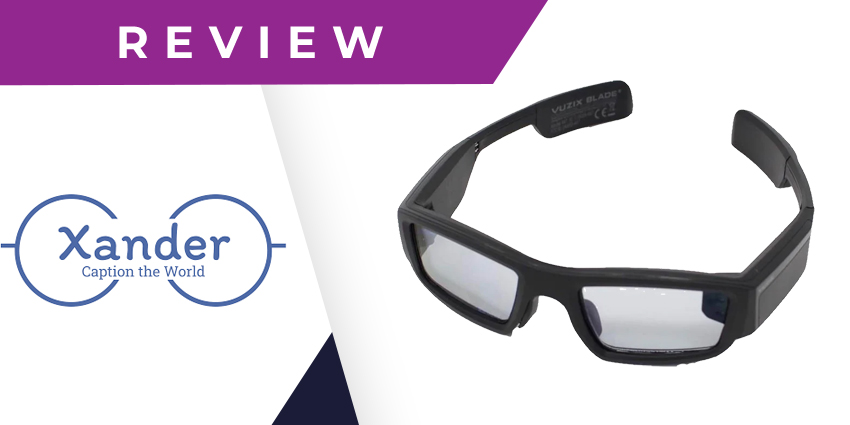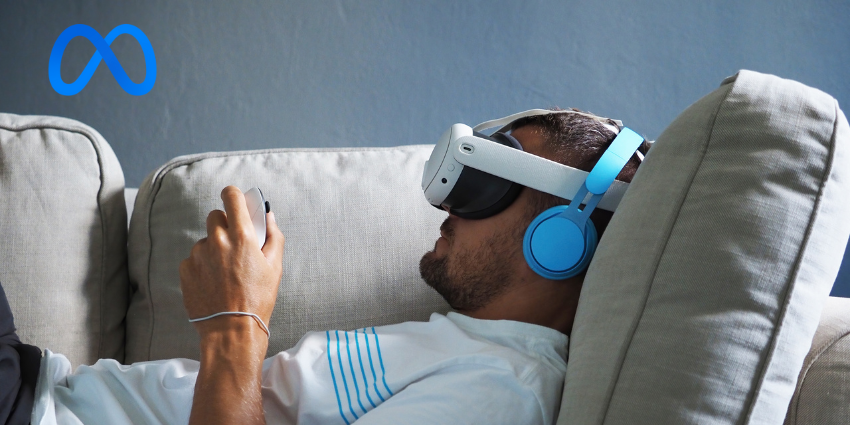Usually, when I’m looking for smart glasses to review, I focus on “enterprise” use cases. I’ve been searching for smart spectacles that genuinely make people safer, more productive, or more efficient at work. But the XanderGlasses caught my eye for a different reason.
These glasses, created by “Xander” a team of audio experts and tech engineers, might not have earned as much attention as Meta’s Orion prototypes (or their Meta Ray-Ban specs for that matter), and they probably won’t appeal to every buyer – but they serve a crucial purpose.
Where other popular smart specs focus on simplifying day-to-day tasks or upgrading entertainment with immersive visuals and AI assistants, the XanderGlasses address a real, global problem: hearing loss. Imagine having access to live captions in every real-world conversation you have, helping you to follow every conversation with precision – that’s exactly what you get here.
Now that these glasses are available to preorder, I think they have incredible potential, so here’s my behind-the-scenes review of what these glasses can really do.
XanderGlasses: Quick Verdict, Pros and Cons
Live captioning glasses aren’t an entirely “new” concept – though few options have actually made it into the XR market. The TranscribeGlass specs, created by Stanford and Yale, offer similar features, but they’re not universally available yet. Other specs, like the HearSight specs, have limited features, such as no access to a dedicated smartphone app.
The XanderGlasses are some of the best (most accessible) captioning glasses I’ve seen – although they do have some downsides. They focus exclusively on transcription – so you’re not going to get a full “augmented reality” experience with images overlaid on top of the world around you.
They also don’t have a lot of built-in tech for spatial computing features (like gesture control), and they’re pretty expensive (over $4,000). Still, they’re reliable, discreet, easy to use, and relatively comfortable too.
Pros:
- Comfortable, lightweight design
- High-quality text-based visuals
- Real-time voice understanding
- Support for prescription lenses
- Privacy-first design
- Durable, long-lasting quality
Cons:
- Expensive pricing
- Not very attractive to look at
- Limited visuals
XanderGlasses Review: Overview and Technical Specs
The XanderGlasses are the first set of smart spectacles created by Xander, which leverage crisp displays, augmented reality technology, microphones, and artificial intelligence. As mentioned above, they’re not the first real-time captioning glasses to tackle the issue of hearing loss. However, they do tackle a lot of the problems early-stage alternatives have.
There’s no complicated interface to navigate, and these glasses are 100% self-contained (they don’t need to be connected to a smartphone at all times). They’re also SOC 2 compliant (excellent for business users worried about protecting data), and incredibly accurate.
Even in noisy environments, like public venues or offices, these glasses excel at capturing audio and immediately transcribing it for you into crisp, clear words. According to Xander, the vision of the company is to enable “augmented understanding”. While other glasses, like the Meta Ray-Bans and XReal Air 2 specs focus mostly on entertainment, the XanderGlasses target hearing loss. They use AR to help you get more out of every conversation, regardless of hearing difficulties.
Here’s a quick run-down of the technical specs:
- Dual noise-canceling microphones for speech capture
- Standalone, offline operation (for use anywhere)
- High-accuracy, crisp captions, projected only to the wearer
- Binocular display for comfortable reading
- Hands-free wearable AI technology
- 6 hours of battery life in connected mode
- Prescription lens support
- Sunglasses clip-on (for outdoor use)
- Included protective case
XanderGlasses: Design Quality and Comfort
Most smart glasses aren’t particularly stylish. The more tech you want to add to a pair of spectacles (like an integrated battery, processor, and AR capabilities), the bulkier they become. Really, Meta only managed to create a pair of good-looking smart specs with the Ray-Bans because they left out a lot of features – such as the ability to use the specs as a standalone device, and integrated displays.
Since the XanderGlasses are pretty feature-rich, they’re not particularly stylish. They suffer from the same problems as most competitors. It’s easy to tell you’re wearing smart glasses here, thanks to the integrated microphones and chunky arms.
Still, even if these glasses aren’t very attractive, they are comfortable. Xander has made a lot of effort to keep the weight to a minimum, so you don’t feel them pressing against your ears and nose when you’re wearing them all day. Plus, the glasses support prescription lenses, and “clip-on” sunglasses for outdoor use, which is excellent.
Another great thing about the “design” of these glasses is how durable they are. The frames come with a titanium front, and the lenses have full UV protection – even if you’re not using the clip-on sunglasses accessory. They even have an ANSI Z87.1 safety certification.
The Visual Performance: Accuracy and Privacy
As I mentioned above, the XanderGlasses aren’t your average “AR specs”. There’s no full-color display or virtual screen you can use to watch larger-than-life videos. Instead, you get a basic set of binocular lenses, powered by Vuzix (one of the leaders in the wearable computing space).
The built in microphones simply pick up on the conversation you’re having, and “caption” it for you with crisp, clear text that appears in front of your eyes naturally. You can adjust the size of the text based on your specific needs with the included app. However, that’s all you get – crisp text, with no images or any extra bells and whistles.
Still, for their specific use case (supporting people with hearing loss), these glasses offer a fantastic visual experience. The text is clear and easy to read – and it doesn’t fill your entire vision, so you can still clearly see everything that’s going on around you. The captions are positioned about an arm’s length from your eyes, so they’re not annoying or overwhelming.
What makes these glasses really special, however, is how accurate they are at conveying what’s being said. Although they do occasionally struggle with “hearing” words incorrectly, you’ll have no trouble following along with whatever is being said.
In fact, these glasses deliver a 90% accuracy performance on average – even when you’re using them in busy places – like hectic streets or offices. Plus, they put privacy first. Only you can see what’s being written on the lenses when you’re wearing them. The XanderGlasses don’t rely on a cloud service either, which means no machine or human is recording or viewing your conversations. Your data remains private at all times.
Ease of Use and Overall Functionality
I mentioned above that one of the best things about the XanderGlasses, compared to other live captioning specs, is how user-friendly they are. You don’t have to mess around with a bunch of specialist software – you can literally just turn the glasses on, pop them on your face, and you’re ready to go. You don’t even need to connect them to your smartphone.
There’s no need for a Wi-Fi connection or a strong cell signal so you can access the internet either. The glasses work seamlessly on their own, with no additional tech required. They even have a pretty impressive battery life (up to six hours), which is great considering they’re not connected to anything.
The downside is that there are really not a lot of features to discuss with these specs. Although the technology obviously leverages artificial intelligence for language understanding and “speech-to-text” capabilities, you don’t get an assistant you can ask to complete tasks for you, like searching the web.
There’s no virtual screen feature if you want to mirror your smartphone or laptop in front of you, like you’d get with other AR glasses. You can’t make phone calls through the specs either. Still, it’s worth remembering that these glasses were designed for a very specific use case.
They’re built to make life easier for those with hearing difficulties – and they do that very well. They don’t even require a lot of maintenance. Unlike hearing aids which require a lot of regular tuning and cleaning, the XanderGlasses just need to be wiped occasionally with a microfiber cloth.
XanderGlasses: Value for Money
I picked “pricing” as one of the biggest downsides for these glasses for obvious reasons. Though prescription glasses can be pretty expensive – the price of these specs (currently $4,999), is pretty prohibitive for most users. I can’t see everyone rushing out to buy a pair – however, Xander has said demand has been extremely high. In fact, they’re currently asking customers making preorders to pay a deposit of $499 upfront, because of high demand.
However, just because these glasses are expensive doesn’t necessarily mean they’re not good value for money. They’re definitely going to be less expensive than a set of hearing aids – although I’m not sure they can replace hearing aids entirely for those with significant hearing loss.
Plus, it’s worth remembering that there are no “extra fees” to worry about with these glasses. You don’t need an ultra-expensive smartphone or a great data plan to access the internet. There are no subscription fees for special apps, or extra costs for accessories – like the sunglasses clip-ons.
XanderGlasses Verdict: A Unique Solution for Hearing Loss
So, are the XanderGlasses going to revolutionize the marketplace? It depends on what you’re looking for. If you want intelligent specs that look amazing, and help you with day-to-day tasks, like capturing video and making calls, the Meta Ray-Bans are obviously a better option.
If you’re looking for an amazing virtual display you can use to watch videos in a brand-new format, these glasses aren’t a good pick either. However, if you’re searching for an intuitive way to tackle the issue of hearing loss, the XanderGlasses are hard to beat.
Yes, they’re expensive and limited in advanced features, but they’re also incredibly intuitive, accurate, privacy-focused, and reliable. If nothing else, I think the XanderGlasses are an excellent insight into just how versatile augmented reality can be.
They prove that cutting-edge technology really can make a difference to your life – even if it’s not making you more productive at work, or upgrading entertainment. Based on my test, these glasses are brilliant – and I really am excited to see what Xander does next.







